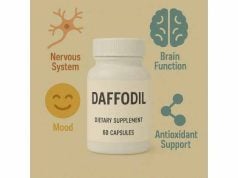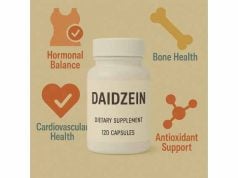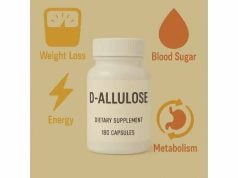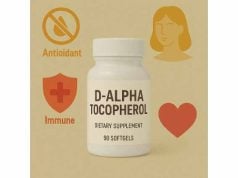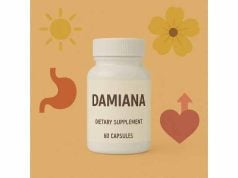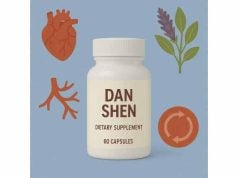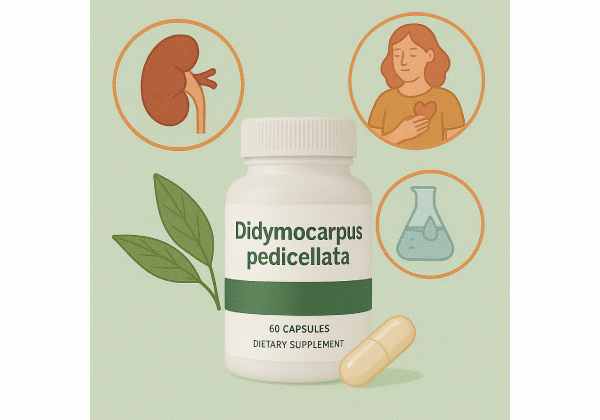
Didymocarpus pedicellata is a Himalayan herb better known in Ayurveda as shilapushpa (“stone flower”). It shows up in several polyherbal formulas for urinary health and kidney stones. Modern lab and animal research suggests it may help by increasing urine flow, curbing oxidative stress, and inhibiting calcium oxalate crystal growth—the most common stone type. Human data are limited and often come from multi-ingredient products, so expectations should be realistic. Still, for people working with a clinician on stone prevention or symptom relief, D. pedicellata can be a thoughtful adjunct when paired with hydration, diet changes, and standard therapies. Below, you’ll find a clear, evidence-grounded guide to what it is, how it may work, how to use it wisely, what to watch out for, and what the research actually says.
Essential Insights for Didymocarpus pedicellata Users
- May support urinary health by limiting calcium oxalate crystal formation and oxidative stress.
- Evidence in humans is limited; most studies evaluate multi-herb formulas rather than the isolated plant.
- No single standard dose; polyherbal tablets often contain ~130 mg per tablet; typical adult regimens equal ~520 mg/day of D. pedicellata content.
- Avoid during pregnancy or breastfeeding, in children, and with complete urinary obstruction or severe kidney disease unless supervised.
Table of Contents
- What is Didymocarpus pedicellata?
- Benefits for kidney stone care
- How to use Didymocarpus pedicellata
- How much should I take?
- Side effects, interactions, and warnings
- What does the evidence say?
What is Didymocarpus pedicellata?
Didymocarpus pedicellata R. Br. is a flowering plant in the Gesneriaceae family, native to the Himalayas and parts of South and Southeast Asia. In traditional Ayurvedic texts and regional practices it appears under names such as shilapushpa (often translated “stone flower”) and is grouped with plants used for “lithotriptic” purposes—helping break down or pass urinary calculi. In many modern products it is paired with other herbs like Bergenia ligulata (pashanbheda), Rubia cordifolia (manjistha), and Cyperus scariosus (nagarmotha).
From a chemistry standpoint, the genus Didymocarpus contains flavonoids, phenolics, chalcones, terpenoids, and other secondary metabolites. These constituents matter because kidney stone formation is a multistep process—nucleation, growth, aggregation, and retention of crystals—fueled by factors like high urinary oxalate and calcium, low citrate, oxidative stress, inflammation, and epithelial injury. In vitro (test-tube) and in vivo (animal) data indicate D. pedicellata extracts can influence several of these steps:
- Antioxidant and anti-inflammatory activity: Lowering reactive oxygen species and inflammatory signaling (e.g., p38 MAPK, osteopontin) can reduce epithelial damage that fosters crystal attachment.
- Crystal modulation: Reducing crystal aggregation and adhesion to renal tubular cells may ease passage and lower stone burden.
- Diuretic support: Increasing urinary volume can dilute lithogenic ions and encourage clearance of small crystals.
It’s critical to separate traditional use and preclinical promise from clinical proof. D. pedicellata is best understood as one component in broader urinary-health strategies, not a stand-alone cure. Many human-facing products are polyherbal, making it hard to attribute benefits solely to D. pedicellata. That said, the plant’s mechanistic profile aligns with mainstream advice for stone prevention—hydrate, increase citrate, reduce supersaturation, and protect the urothelium—so it can fit sensibly alongside medical care.
Bottom line: D. pedicellata is a botanical with plausible mechanisms for urinary support, especially in calcium oxalate stone contexts, but definitive, high-quality human trials on the isolated herb are still lacking. Use it to complement—not replace—clinician-guided therapy.
Benefits for kidney stone care
Most interest in D. pedicellata centers on calcium oxalate stones, which make up ~70–80% of kidney stones worldwide. The herb’s proposed benefits map to the biology of stone formation and symptoms:
- Supports crystal management. Laboratory work shows reductions in calcium oxalate crystal formation, aggregation, and adhesion to renal cells—mechanisms that could translate into fewer, smaller, or less “sticky” crystals. In animal models of hyperoxaluria, D. pedicellata extracts have lowered kidney crystal deposition and tissue injury while modulating oxidative stress markers.
- Eases urinary discomfort. By promoting diuresis and reducing local inflammation, formulas containing D. pedicellata may help with burning urination and urinary urgency associated with stone passage or crystalluria.
- Adjunct in polyherbal products. Several multi-herb combinations for urolithiasis use D. pedicellata as a cornerstone ingredient. In clinical settings, some of these mixtures have outperformed placebo for short-term endpoints like stone size reduction or expulsion rates; however, results vary and study quality is mixed.
- Potential protective effects on renal epithelium. Sustained oxidative stress and inflammation predispose to recurrent stones. By dampening these pathways in preclinical models, D. pedicellata may help maintain healthier tubular surfaces that are less hospitable to crystal anchoring.
Important qualifiers:
- Benefits are best established in preclinical (cell/animal) contexts.
- Human evidence largely involves polyherbal regimens where D. pedicellata is one of many active constituents; attribution to the single plant is uncertain.
- Some clinical trials show neutral findings on key outcomes like urinary supersaturation.
- Even when short-term stone size or expulsion improves, long-term recurrence prevention remains insufficiently studied.
Practical implications: If you and your clinician are pursuing non-surgical strategies—hydration, citrate, diet, and risk-factor correction—adding a reputable product that includes D. pedicellata can be reasonable. Consider it most for calcium oxalate stone-prone individuals who want incremental, low-risk support and are willing to monitor with imaging and 24-hour urine testing.
How to use Didymocarpus pedicellata
Because there is no pharmacopeial standard for isolated D. pedicellata, most people encounter it in polyherbal tablets or capsules formulated for urinary health. Using it well means fitting it into a comprehensive plan and focusing on measurable outcomes.
Smart steps to get started
- Confirm your stone type. If possible, have a passed stone analyzed or undergo metabolic evaluation. D. pedicellata’s rationale is strongest for calcium oxalate stones; it is not a substitute for uric acid alkalinization or cystine-specific regimens.
- Review meds and conditions. Discuss with your clinician if you have chronic kidney disease, a single kidney, a history of obstruction, frequent infections, or if you’re pregnant/breastfeeding.
- Choose a reputable product. Look for transparent labeling, lot numbers, and manufacturer quality assurances. Products that disclose per-tablet extract amounts (including the D. pedicellata content) help you track intake.
- Start low and go slow. Begin at the lower end of the product’s suggested dose for one week while watching for GI upset or urinary irritation.
- Hydrate deliberately. Target urine output ≥2.0–2.5 liters/day unless your clinician advises otherwise. Herbal support works best in adequately hydrated people.
- Pair with diet changes. Limit high-oxalate foods if you have hyperoxaluria, maintain normal calcium intake (not low), moderate sodium, and emphasize fruits and vegetables that raise urinary citrate.
- Track response. Use symptom logs (pain episodes, LUTS), periodic urinalysis, and repeat imaging as directed. Reassess after 8–12 weeks; discontinue if there’s no objective improvement.
- Know when to escalate. Worsening pain, fever, vomiting, anuria, or signs of obstruction warrant urgent medical evaluation. Herbal products are not appropriate for complete ureteral obstruction.
Form factors you might see
- Polyherbal tablets/capsules: Commonly list D. pedicellata alongside Bergenia ligulata and others. Labels may specify per-tablet milligrams for each herb.
- Powders and teas: Traditional preparations exist but are less standardized; avoid if the product lacks identity testing or contamination checks.
- Liquid extracts: Convenient for dose titration but scrutinize alcohol content and per-mL equivalence.
Setting expectations
- Improvements (if any) are usually modest and gradual—for example, easing urinary discomfort or supporting small-stone passage—not guaranteed stone dissolution.
- For recurrent stone prevention, D. pedicellata should sit behind proven measures: hydration, dietary adjustments, citrate when indicated, thiazides for hypercalciuria, and urate-lowering or alkalinization for uric-acid stones.
How much should I take?
There is no universally accepted dose for isolated D. pedicellata. Dosage guidance typically comes from polyherbal urinary-health tablets, which:
- Provide ~130 mg of D. pedicellata per tablet (as part of a multi-ingredient blend).
- Recommend two tablets, twice daily for adults (manufacturer guidance).
- This regimen yields ~520 mg/day of D. pedicellata content within the broader formula.
Practical dosing framework
- Adults (general): Follow the product label. If a formula lists 130 mg D. pedicellata per tablet, two tablets twice daily equate to ~520 mg/day of this herb’s content. Consider starting at half that for a week to gauge tolerance, then titrate.
- Older adults or low body weight: Begin low (e.g., half the labeled dose) and increase only if tolerated, with clinician oversight.
- Reduced kidney function: Use with caution. Although many products are marketed for kidney health, compromised renal clearance can raise the stakes of any adverse effect. In moderate-to-severe CKD, prioritize clinician-directed therapies; avoid unsupervised use.
- Pregnancy or breastfeeding: Avoid due to insufficient safety data.
- Children and adolescents: Avoid outside of specialist guidance.
Timing and administration
- Take with water after meals to minimize GI upset.
- Keep fluid intake high unless restricted for medical reasons.
- If you’re also on potassium citrate or thiazides, space doses a few hours apart and monitor with your clinician.
Duration
- Trial periods of 8–12 weeks are reasonable to assess short-term tolerance and any symptomatic support, followed by reevaluation. For chronic stone prevention, cyclic use may be considered, but there’s no consensus standard; decisions should be individualized based on metabolic workups and imaging.
What not to do
- Don’t exceed labeled doses to “force” stone dissolution.
- Don’t use herbal tablets as a stand-alone treatment for obstruction, infection, or severe pain.
- Don’t combine multiple urinary-stone supplements indiscriminately—overlap is common and increases pill burden without clear benefit.
Side effects, interactions, and warnings
Tolerability
Polyherbal products containing D. pedicellata are generally well tolerated in short-term studies, with few serious adverse events reported. The most common issues are mild GI discomfort (nausea, stomach upset) or urinary frequency from diuretic effects. Because human trials are small and heterogeneous, rare events may be under-reported.
Potential adverse effects
- GI upset: Usually transient; take with food and reduce dose.
- Urinary urgency/frequency: Stems from diuresis; ensure access to fluids and restrooms.
- Allergic reactions: Rare; discontinue if rash, hives, or swelling occurs.
- Electrolyte shifts: Theoretically possible with sustained diuresis; monitor if you have electrolyte-sensitive conditions.
Interactions—use caution with
- Prescription diuretics (e.g., thiazides, loop diuretics): Additive diuresis is possible. Coordinate with your clinician and monitor electrolytes.
- Citrate therapy or urine alkalinizers: No documented direct interaction, but combined regimens warrant urine chemistry monitoring to avoid over-alkalinization.
- Anticoagulants/antiplatelets: Some polyherbal formulas include additional botanicals with mild antiplatelet activity; disclose all supplements to your clinician.
- Nephrotoxic drugs: People on agents with renal toxicity risk (e.g., certain chemotherapy) should involve their specialist before adding any supplement.
Who should not use it (or should only use under supervision)
- Pregnant or breastfeeding individuals. Safety data are inadequate.
- Children and adolescents. Lack of dosing and safety data.
- People with complete ureteral obstruction. Herbal products are not appropriate; seek urgent care.
- Moderate-to-severe chronic kidney disease, single kidney, or post-transplant. Use only with specialist guidance.
- Recurrent UTIs or feverish stone events. Treat infection first; do not delay antibiotics or procedures.
Red-flag symptoms—stop and seek care
- Fever, chills, flank pain with vomiting
- Inability to pass urine
- Severe, persistent pain unresponsive to usual measures
- Visible blood in urine that worsens or persists
Quality and contamination risks
Choose brands with third-party testing where possible. Herbs can be misidentified or adulterated, and heavy metals or microbes can contaminate poorly processed products. Favor vendors who disclose lot testing and extract standardization if available.
What does the evidence say?
Preclinical findings are encouraging. Recent work in cell and animal models reports that D. pedicellata extracts can:
- Reduce reactive oxygen species and inflammatory signaling (e.g., p38 MAPK, osteopontin).
- Lower calcium oxalate crystal deposition and kidney tissue injury in hyperoxaluric rats.
- Improve renal epithelial cell viability and modulate crystal-cell interactions.
Clinical data are mixed and mostly polyherbal.
- A 2016 systematic review of herbal medicines for urinary stones found that a multi-herb preparation containing D. pedicellata improved stone size reduction and clearance versus placebo over about three months. However, overall evidence quality was low, with a high risk of bias.
- A rigorous, crossover study in recurrent calcium oxalate stone formers treated with a well-known polyherbal tablet (containing 130 mg D. pedicellata per tablet, dosed two tablets twice daily) showed no significant change in urinary supersaturation after six weeks or reduced stone burden after one year versus placebo/open label.
- Broader narrative overviews (2025) emphasize a renewed interest in phytotherapy for urolithiasis but also underscore the limited number of high-quality randomized trials, heterogeneity of formulations, and open questions on ideal dosing, duration, and which stone types respond best.
How to read this evidence
- Mechanistic plausibility: Stronger—antioxidant, anti-inflammatory, and crystal-modulating effects align with pathophysiology.
- Human efficacy: Uncertain—some short-term clinical signals exist in mixtures, but robust, isolate-specific trials are lacking.
- Safety: Short-term use appears acceptable in healthy adults, but comprehensive pharmacovigilance is sparse.
Practical takeaway
If you are a calcium oxalate stone former aiming to reduce small-crystal burden or urinary discomfort, a time-limited trial of a quality polyherbal formula that includes D. pedicellata can be reasonable under clinician guidance—as an adjunct to hydration, diet, and indicated medications. Expect incremental benefit; continue only if objective measures or symptoms improve.
References
- Reno-protection by Didymocarpus pedicellata against oxalate-induced damage: mechanistic insights into mitigation of oxidative stress induced signaling pathways in renal cell line and rat model (2025).
- Phytotherapy in Urolithiasis: An Updated Overview of Current Knowledge (2025) (Narrative Review).
- A review on ethnobotany, phytochemistry, and pharmacology of the genus Didymocarpus wall. (Gesneriaceae) (2022) (Review).
- Effect of Cystone® on Urinary Composition and Stone Formation Over a One Year Period (2011) (Clinical Trial).
- Herbal medicines for urinary stone treatment. A systematic review (2016) (Systematic Review).
Disclaimer
This guide is for educational purposes only and is not a substitute for personalized medical advice, diagnosis, or treatment. Kidney stone disease can be serious. Always consult a qualified healthcare professional before starting, stopping, or combining supplements such as Didymocarpus pedicellata with prescription therapies, especially if you are pregnant, breastfeeding, have kidney disease, or experience red-flag symptoms (fever, obstruction, severe pain).
If you found this article useful, please consider sharing it on Facebook, X (formerly Twitter), or your favorite platform, and follow us for future updates. Your support helps us continue creating clear, evidence-based resources.

